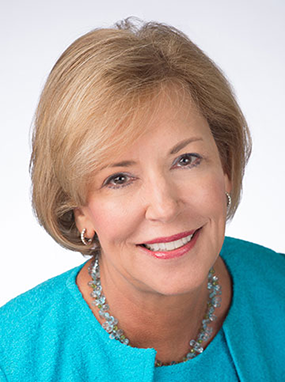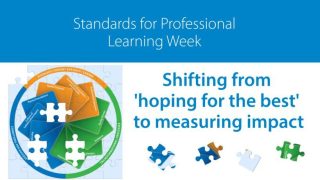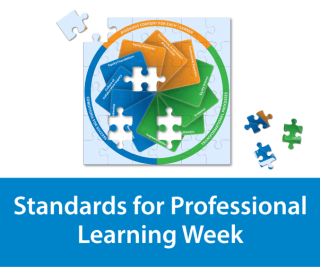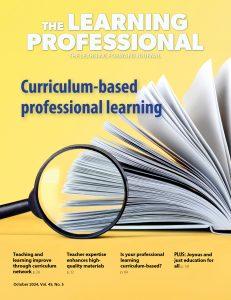What steps are you taking to look at the bigger picture? That’s a question I’d like educators to ponder as they consider how to better support teachers and leaders in their improvement efforts.
The more professional learning exemplars we see — that is, schools and districts that can document how their professional learning contributes to improved student outcomes — the more we see that the entire education improvement effort of a district integrates effective professional learning in all its aspects.
At the heart of effective professional learning is the daily work of teachers in teams focused on specific student learning challenges, as we write about in the Standards for Professional Learning and elsewhere. And yet, this can’t happen in a vacuum if educators’ goals are to sustain improvement and ensure that every child in a district experiences great teaching and learning. Rather, we need to look at the bigger picture and determine what needs to happen at the district or system level so that this kind of learning happens for all educators.
A just-released report from ERS, Igniting the Learning Engine: How School Systems Accelerate Teacher Effectiveness and Student Growth Through Connected Professional Learning, makes the point very clearly. Systems that improve teacher effectiveness succeed because of what ERS labels Connected Professional Learning. The report finds that professional learning in the successful systems they studied is “profoundly connected — really, embedded — into the teaching job, and teachers learn and grow through the daily work of improving instruction.”
The report identifies three critical elements for Connected Professional Learning throughout a system, including rigorous, comprehensive curricula and assessments; content-focused, expert-led collaboration; and frequent, growth-oriented feedback. Most important is how these elements are connected to one another and to the whole district’s ways of working.
In our work to support the redesign of professional learning, we talk about this bigger picture as a comprehensive professional learning system, work refined and exemplified through our intensive statewide work in Kentucky known as the Transforming Professional Learning initiative. We’re also helping states and districts leverage ESSA to create learning systems.
We see comprehensive professional learning systems in such school districts as Fort Wayne (Indiana) Community Schools, which has invested in building leadership capacity among district and school leaders and established a clear vision for how professional learning helps them reach and teach all children.
Core to these comprehensive learning systems are several components, which you can read more about here.
- Professional learning systems articulate a clear vision for professional learning, spelling out its relationship to educator effectiveness and student outcomes. In the ERS report, this element is most explicit when the authors state how their three Connected Professional Learning elements are “connected to the system’s overall theory of action for how teachers improve, and, ultimately, how students learn” (p. 3). Additionally, the report’s focus on rigorous curricula, assessments, and instructional materials puts teacher and student learning side by side.
- A definition of professional learning establishes that educators learn in collaboration in a cycle of continuous improvement.
- Learning Forward’s Standards for Professional Learning define the characteristics of professional learning that leads to changed practices and improved results for students. How the ERS report defines content-focused, expert-led collaboration — teams that have the time and support to dive deep into content-specific learning (p. 19) — is very much in line with our standards.
- Stakeholders use data for ongoing assessment and evaluation to ensure that professional learning has its intended impact.
- Learning systems define clearly the roles of all stakeholders and their responsibilities related to professional learning.
- Learning systems allocate resources to ensure full implementation and equity of access to professional learning. The details about the reallocation of resources that made Connected Professional Learning possible in the districts and organizations examined in the ERS report are valuable and test long-held assumptions on how to best support teachers in their growth and career advancement.
I know this list can be daunting as educators consider how to transform entire systems. I encourage any stakeholder to start with the first component: What is your vision for professional learning? What do you believe educators need to become their very best? What are your beliefs about how a district or organization supports that?
The other pieces follow a well-articulated vision, and this report from ERS offers additional clarity about the results we can achieve through such systems.






